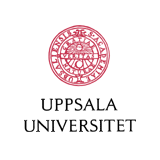|
WINNER MAC for Cellular Transmission.
Mikael Sternad
, Uppsala University,
Tommy Svensson
,
Chalmers U. of Technology and
Göran Klang
, Ericsson AB.
IST Mobile Summit 2006,
Mykonos, Greece, June 2006.
-
Outline:
-
The European research project WINNER is a cooperation of 39 partners
from industry, operators, and academia, which is partly funded
by the European Union. It has the overall goal to develop a single
radio interface covering the full range from isolated hot spots
to wide area cellular scenarios by using different modes of a
common technology. It targets increased data rates, low latency,
and high system capacity based on adaptive transmission schemes,
flexible spectrum usage, relaying, and advanced multi-antenna
processing. The WINNER I project (2004-2005) evaluated
technologies and combined them into a system concept.
It forms the basis for the WINNER II project (2006-2007),
which aims at the design and detailed assessment of a beyond
3G system proposal.
The WINNER radio interface design is
aimed at attaining both high flexibility in terms of spectrum
use and fulfillment of user requirements and a high spectral
efficiency in different deployment and usage scenarios; two
goals that are often contradictory and difficult to combine.
The medium access control (MAC) system layer plays an
important role for fulfilling these goals. It performs tasks that
in existing systems are associated with Logical Link Control,
Medium Access Control and Radio Resource Control protocol (sub)layers.
The present paper focuses on the resource allocation problems
that are to be solved and outlines the time-frequency-spatial resource
units and control function blocks designed to solve them.
Detailed protocol aspects of the MAC system layer are not
discussed here, and are at present being developed within WINNER II.
-
Abstract:
-
This paper summarizes recent work towards an advanced
cellular packet data system using a multicarrier-based beyond
3G air interface, developed within the European IST research
project WINNER I.
The resulting air interface concept has a
medium access control (MAC) system layer that performs
resource allocation and packet scheduling within relay-enhanced cells.
It also performs flexible allocation of antenna resources on a per-flow
basis and provides support for flexible spectrum use.
The present paper focuses on the resource allocation
problems and outlines the time-frequency-spatial resource
units and control function blocks designed to solve them.
-
Related publications:
-
Later WINNER II design (ICT Mobile Summit 2008).
-
Downlink control overhead
in WINNER II design (VTC-Fall 2008).
-
Proc. of the IEEE (Dec. 2007)
invited paper on
adaptive transmission in beyond-3G wireless systems.
-
Spatial scheme adaptation framework for WINNER,
described at VTC 2006-Spring.
-
IST Mobile Summit 2005 paper
that describes adaptive TDMA/OFDMA downlink and uplink transmission.
-
Source:
-
Pdf, (479K)
|
WINNER
|
The Wireless IP Project Homepage
|
Main
entry in list of publications
|
This material is presented to ensure timely dissemination
of scholarly and technical work. Copyright and all rights
therein are retained by authors.
All persons copying this information are expected to
adhere to the terms and constraints invoked by each authors
copyright. This work may not be reposted
without the explicit permission of the copyright holders.
|

